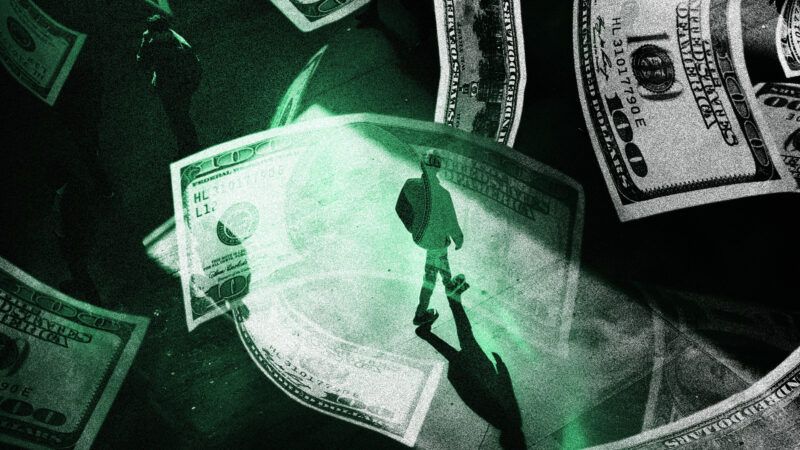Why Are So Many People Eligible for Public Service Loan Forgiveness?
A recent case in the 4th Circuit Court of Appeals highlights just how bloated PSLF eligibility has become.

On Tuesday, a federal court dismissed a lawsuit against the Pennsylvania Higher Education Assistance Agency, made by a man who says he was given incorrect information that led him to not receive student debt cancelation under the Public Service Loan Forgiveness (PSLF) program.
While the lawsuit focuses on one person's grievance, the case highlights just how absurdly broad eligibility for the PSLF program has become. Intuition would imply that the program would only apply to a small number of truly public-service, poorly paid jobs, but as many as 25 percent of Americans actually qualify for the program, including many working for private employers.
According to the six-page opinion from the 4th Circuit Court of Appeals, Todd Berman took out two loans from the Department of Education. In order to qualify for PSLF, he had to work at a qualifying employer for 10 years. For four years, Berman served in the United States Army, a qualifying employer, but trouble arose when Berman changed jobs. He claims that he was repeatedly told that his new employer, Blue Cross Blue Shield of North Carolina—a private not-for-profit health insurance company—qualified for the program. However, in 2018, he was sent a letter informing him that his employer no longer qualified.
Following this notice, Berman consolidated his federal loans into private loans. The next year, however, he was informed that Blue Cross Blue Shield of North Carolina actually did qualify for the PSLF program. Unable to gain forgiveness with privately held loans, Berman sued.
After first having his case dismissed by a lower court, the 4th Circuit Court of Appeals again dismissed Berman's suit, arguing that the Pennsylvania Higher Education Assistance Agency was immune from the suit.
"If there is a villain in this story, it is the Department—not the Agency. Berman might have sought to challenge the Department's conclusion that Blue Cross Blue Shield of North Carolina was not a qualifying public service employee," Judge Toby J. Heytens wrote in the court's opinion. "But sovereign immunity always would have prevented Berman from suing the Department for money damages, and Berman may not evade that result by suing the Department's agent instead."
While the Pennsylvania Higher Education Assistance Agency should not have given Berman conflicting information, his case raises another question entirely. Why was a private health insurance company a qualifying public service employer to begin with?
According to the Education Department, the PSLF is meant to "ensure that all public servants can more easily access this targeted debt relief." However, if that were true, only a very limited number of poorly paid, altruistic service jobs—like becoming a public defender or social worker—would seem to qualify.
Instead, millions of Americans qualify for forgiveness under PSLF—many of whom work for employers that hardly seem to altruistically serve the public. University bureaucrats, prosecutors, and employees at most hospitals qualify for PSLF. Further, instead of focusing on specific jobs, as long as an employer qualifies, any person working for them can get PSLF, no matter how much money they earn or whether their job could legitimately be framed as serving the public.
But even if the PSLF program were significantly narrowed, it still wouldn't provide an unmitigated boost to jobs that truly serve the public—instead, providing loan forgiveness incentivizes colleges to raise prices for degrees that lead to PSLF-eligible jobs.
Ironically, even though PSLF eligibility is absurdly overbroad, the Education Department's own incompetence has kept many eligible borrowers from successfully gaining forgiveness under the program. In 2018, a report from the Government Accountability Office found that the program had incredibly high denial rates. However, after reforms, over 600,000 borrowers have received forgiveness as of last year—still a far cry from the nearly millions who are technically eligible.


Show Comments (17)